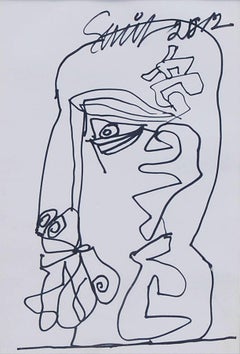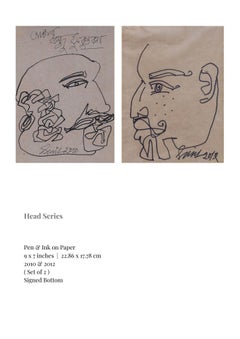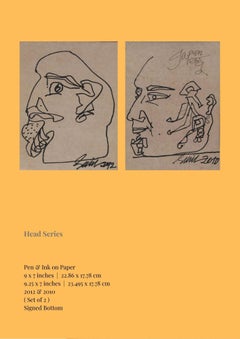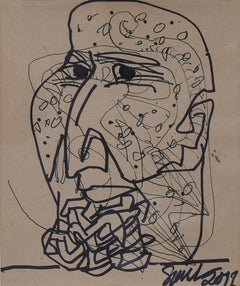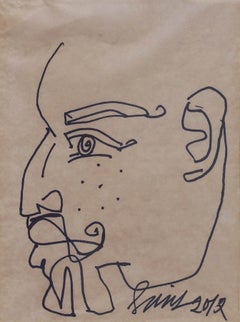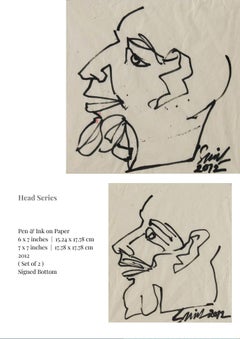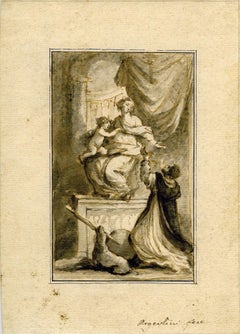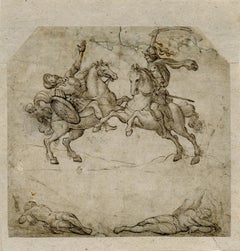Sunil Das Portrait Drawings and Watercolors
Sunil Das was a Master Modern Indian Artist from Bengal. He joined Government College of Arts & Craft, Calcutta, 1954–59. Extremely successful right from his college days, Das has been extremely well lauded by art critics, the press, artists and the art and culture glitterati across the world. Das was the youngest artist to have won the National Award, "The Taj Shiromani Kala Puraskar" recipient of the much-coveted Government of India's 4th Highest Civilian Award, "The Padma Shree" (2014). Highly talented Das has done shows all across the world, got fame as early as while he was still in college, the youngest recipient of the "Lalit Kala Academy Awards" and received a scholarship to study at L’Ecole Nationale supérieure des Beaux-arts, Paris in 1961–63. "There are painters who transform the sun to a yellow spot, but there are others who, with the help of their art and intelligence, transform a yellow spot into sun" - Pablo Picasso. Das was exactly one such artist. Das' style of work is very original and shows no specific influence. He had risen to fame like MF Hussain with his famous paintings of horses, to the extent that he was nicknamed 'Ghora Das' ( Hindi which means Horse Das) Like Hussain, Das was inspired by the force and strength of the moving horse. The horses and the bull ( inspired from his visit to Spain and witnessing the Bull Fighting ) have appeared more than 7000 times in Das’s works. Das has otherwise painted haunting pictures of women thereby revealing the dark side of people who are otherwise considered beautiful. His works on the Red Light of Kolkata was also much-lauded and brings about an important social message through his works. Das's main mediums could easily be oil on canvas. His stimulating and stirring works in Mixed Media, Conte, Charcoal, Serigraphy, Wood Works and Sculptures. Whatever medium Das worked on, he effortlessly mastered. Not one to be stuck to one style, Das experimented and worked on various series and mediums. His works involve the quick use of the brush and pen to create masterpieces that have a dynamic effect, potent with power.
2010s Modern Sunil Das Portrait Drawings and Watercolors
Paper, Ink, Pen
2010s Modern Sunil Das Portrait Drawings and Watercolors
Paper, Ink, Pen
2010s Modern Sunil Das Portrait Drawings and Watercolors
Paper, Ink, Pen
2010s Modern Sunil Das Portrait Drawings and Watercolors
Paper, Ink
2010s Modern Sunil Das Portrait Drawings and Watercolors
Paper, Ink, Pen
2010s Modern Sunil Das Portrait Drawings and Watercolors
Paper, Ink, Pen
Mid-18th Century Italian School Sunil Das Portrait Drawings and Watercolors
Laid Paper, Ink, Watercolor
16th Century Old Masters Sunil Das Portrait Drawings and Watercolors
Ink, Laid Paper, Pen
1920s Realist Sunil Das Portrait Drawings and Watercolors
Paper, Pencil
2010s Contemporary Sunil Das Portrait Drawings and Watercolors
Paper, Watercolor
1870s French School Sunil Das Portrait Drawings and Watercolors
Paper
1950s American Modern Sunil Das Portrait Drawings and Watercolors
Paper, India Ink, Watercolor, Pen
Early 20th Century Modern Sunil Das Portrait Drawings and Watercolors
Paper, Charcoal, Pastel, Watercolor, Gouache
Early 19th Century Old Masters Sunil Das Portrait Drawings and Watercolors
Paper, Chalk
1920s American Impressionist Sunil Das Portrait Drawings and Watercolors
Paper, Watercolor
1890s Pre-Raphaelite Sunil Das Portrait Drawings and Watercolors
Paper, Ink, Pen
1970s American Modern Sunil Das Portrait Drawings and Watercolors
Watercolor, Pen, Pencil, Paper
Early 20th Century American Impressionist Sunil Das Portrait Drawings and Watercolors
Watercolor
